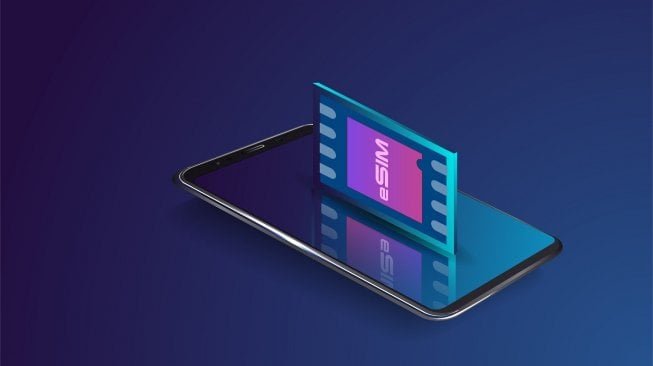The way we connect to mobile networks is evolving rapidly, and embedded SIM (eSIM) technology is at the forefront of this transformation. Unlike traditional physical SIM cards, eSIMs are built into devices, allowing users to switch carriers and manage plans digitally. But is eSIM the future of mobile connectivity? This article delves into the technology, benefits, limitations, and its impact on industries and consumers alike.
What is an eSIM?
An eSIM (Embedded Subscriber Identity Module) is a digital SIM that enables users to activate a cellular plan without needing a physical SIM card. Unlike traditional SIM cards, which are removable, an eSIM is soldered directly into a device’s motherboard. This eliminates the need for a physical slot, providing more flexibility and durability.
Key Features of eSIM:
- Remote provisioning and activation
- No need for physical SIM swapping
- Supports multiple carrier profiles
- Reduces the risk of SIM theft or loss
- Space-saving design ideal for compact devices
How Does eSIM Work?
eSIM technology relies on remote SIM provisioning, allowing users to download carrier profiles onto their device. When purchasing an eSIM-compatible device, users can scan a QR code or enter details manually to activate a plan.
Steps to Activate eSIM:
- Purchase an eSIM-compatible device.
- Contact a network carrier supporting eSIM.
- Receive a QR code or activation details.
- Scan the QR code using the device’s settings.
- Configure network settings, and you’re connected!
The process is seamless and eliminates the need for purchasing, inserting, or swapping physical SIM cards.
Benefits of eSIM
1. Convenience and Flexibility
- Users can switch carriers without changing a SIM card.
- Ideal for frequent travelers who need multiple carrier profiles.
2. Improved Device Design
- Removes the need for a SIM tray, enabling sleeker and more durable devices.
- Allows more space for larger batteries or additional components.
3. Enhanced Security
- Reduces SIM card theft risks.
- Remote deactivation in case of device loss or theft.
4. Better Network Connectivity
- Users can choose the best network provider in different locations.
- Supports seamless carrier switching in supported regions.
5. Eco-Friendly Solution
- Reduces plastic waste from traditional SIM cards and packaging.
- Minimizes electronic waste by eliminating unused or discarded SIMs.
Limitations and Challenges of eSIM
1. Limited Carrier Support
- Not all network providers support eSIM.
- Some regions have limited eSIM-compatible plans.
2. Device Compatibility
- Only newer devices support eSIM technology.
- Older models may still require traditional SIM cards.
3. Potential Security Risks
- Remote activation increases the risk of cyber threats.
- Requires robust security measures to prevent unauthorized access.
4. No Instant Physical Replacement
- Unlike traditional SIM cards, which can be swapped instantly, eSIM reactivation requires internet access and carrier support.
eSIM Adoption in Various Industries
1. Smartphones and Tablets
- Apple, Google, and Samsung have embraced eSIM technology.
- Devices like iPhone 14, Google Pixel, and Samsung Galaxy support eSIM.
2. Wearable Devices
- Smartwatches, such as Apple Watch and Samsung Galaxy Watch, use eSIM for standalone connectivity.
3. Internet of Things (IoT)
- Enables connectivity in smart home devices, GPS trackers, and industrial IoT applications.
4. Automotive Industry
- Connected cars use eSIMs for real-time navigation, entertainment, and emergency services.
5. Business and Enterprise Solutions
- Corporate employees can use eSIM to manage multiple work profiles on a single device.
- Simplifies fleet management for logistics companies.
The Future of eSIM: What’s Next?
1. Wider Carrier Adoption
- More telecom providers are expected to support eSIM.
- Expansion into developing markets could increase adoption rates.
2. Advanced Security Measures
- Enhanced encryption and authentication to prevent fraud.
- AI-powered security protocols for better protection.
3. Integration with 5G Networks
- Seamless integration with 5G for faster connectivity.
- Supports ultra-reliable and low-latency communication.
4. Potential SIM-Less Future
- With growing eSIM adoption, physical SIM cards may become obsolete.
- Future smartphones may only feature eSIM technology.
Conclusion
eSIM technology is revolutionizing the way we connect to mobile networks. With its convenience, security, and flexibility, eSIM is paving the way for a future of seamless connectivity. However, challenges such as limited carrier support and security concerns must be addressed to maximize its potential. As telecom providers continue to embrace eSIM, we may soon witness a world where physical SIM cards become a thing of the past.
So, is eSIM the future of mobile connectivity? The answer seems to be a resounding yes, but only time will tell how quickly the world fully embraces this digital transformation.


